|
2008. augusztus 29 – szeptember 30. Jonathan Robert Windmüller szobrászatot és környezettervezést tanult a Gerrit-Rietveld Akadémián, Amszterdamban. 1974-78 között a jeruzsálemi Bezal’el művészeti és design akadémia vendégtanáraként dolgozott, 1980 óta Németországban él. Művészetéhez a kulcsot a rá nagy hatást gyakorló izraeli táj, a sivatag – a vizet és a növények zöldjét nélkülöző – színekben gazdag látványa kínálja. 1970-1990 között elsősorban környezettervezéssel foglalkozott, 1999 óta készíti nagyméretű, földszínekkel, földfestékekkel festett „tájképeit”, önmaga által kialakított topográfiáit. Ezt a világot folytatta, amikor – az izraeli földet és homokot használva színezőanyagként – megfestette az Énekek éneke sorozatot. A szépséges szerelmi, sőt erotikus vers sorai Jonathan nagyméretű „tájképein” héber betűs, művészi kalligráfiaként jelennek meg. A bibliai szöveg és a bibliai táj különleges harmóniát alkotnak a képeken. „A nyomokról szólnak, az emlékek, az érzelmek, a gondolatok nyomairól. Annak a kultúrának a nyomairól, amelyben 2600 évvel ezelőtt, amikor Salamon verse született, az erotika az emberi lét alapvető tapasztalatát fejezte ki. Költészet és könnyed léhaság jellemzi ezt a művészetet […]” – mondta a művész a képekről és az ihletet adó Énekek Énekéről. A verssorok magyarul Benedek István Gábor különlegességnek számító hexameteres fordításában voltak olvashatók. 29th August 2008 – 30th September 2008 Jonathan Robert Windmüller studied scuplture and environmental design at the Gerrit-Rietveld Academy in Amsterdam.From 1974 to 1978,he worked as a visiting professor at the Bezal’el Academy of Art and Design in Jerusalem, and has lived in Germany since 1980.The key to his art, which has a great influence on him, is the Israeli landscape, the colorful view of the desert that lacks water and the green of plants. From 1970 to 1990 he was primarily involved in environmental planning, and since 1999 he has been making large-scale ”landscapes”, painted with earth colours and earth paints, topographies created by himself. He continued this world when he painted the Song of Songs series, using Israeli soil and sand for colouring. The lines of this beautiful love and even erotic poem appear in Jonathan’s large-scale ”landscapes” as artistic calligraphy in Hebrew.The biblical text and the biblical landscape form a special harmony in the pictures.It’s about the clues, the traces of memories, emotions, thoughts.The traces of the culure in which, 2600 years ago, when Solomon’s poem was born, eroticism expressed the fundamental experience of human existence. Poetry and light-heartedness characterize this art {…},” the artist said of the images and the Song of Songs that inspired him. The verses could be read in the special hexametric translation of Gábor Benedek in Hungarian language.
1 Comment
|
Tartalom:A Magyar Zsidó Múzeum és Levéltár kiállításai Categories |
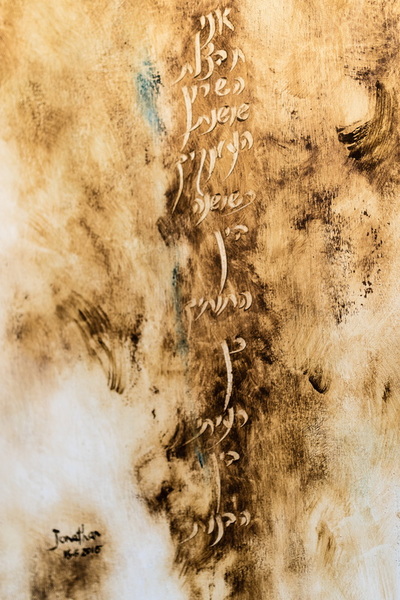
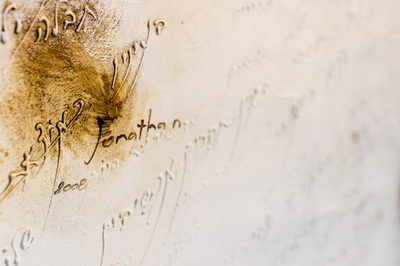
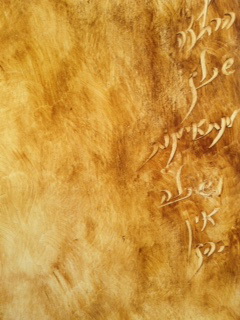
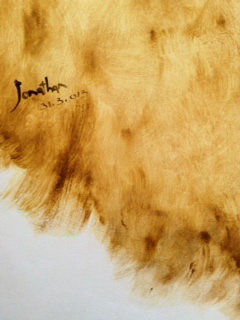
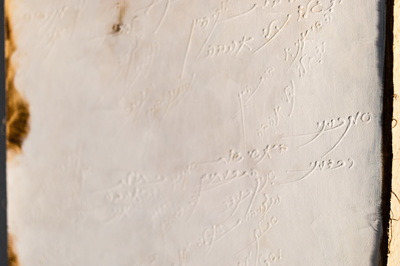
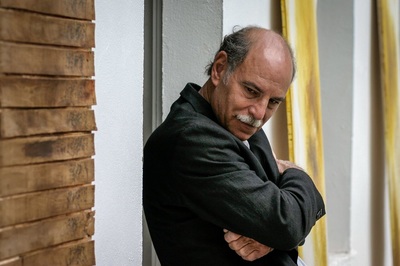
 RSS Feed
RSS Feed